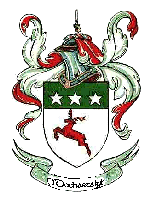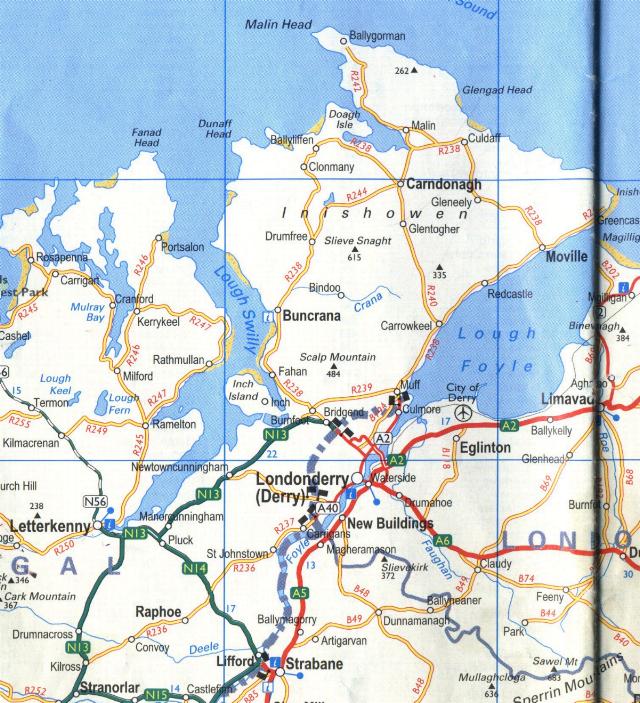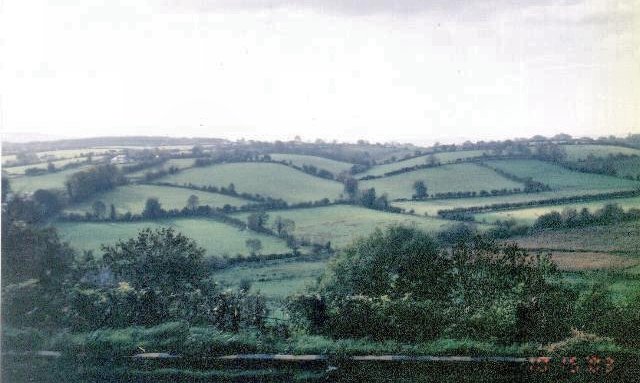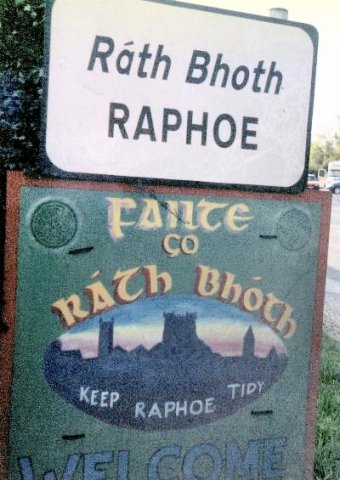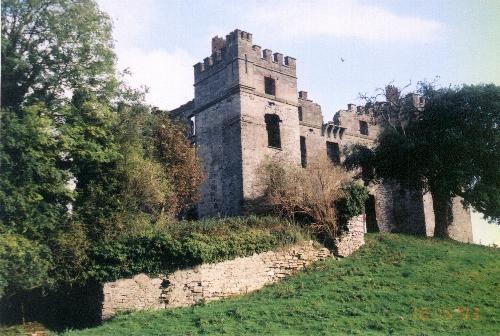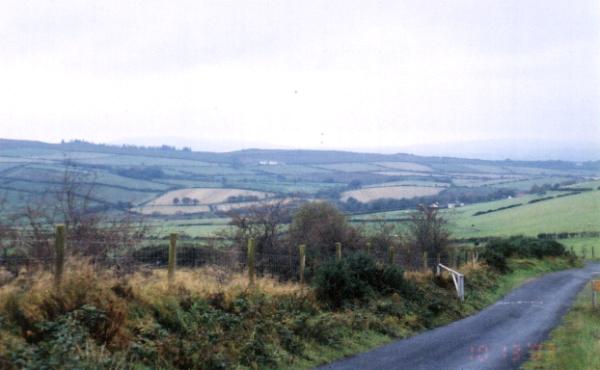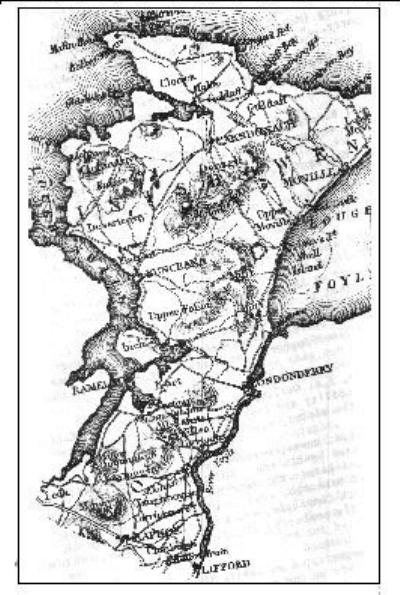Liam (Oge)'s son
Michael (Mor) and his family immigrated to America in 1727, probably
with the large Caldwell
settlement to New Castle, DE. John Caldwell, the Daughertys'
Presbyterian landlord and his wife Margaret Phillips Caldwell
on ship Eagle's Wing from the port of Londonderry with
five of their children, his brothers, and three brothers-in-law,
including Thomas Daugherty and his wife, probably Anne, the sister
of John Caldwell's wife Margaret Phillips. Caldwell was a prosperous
Presbyterian landlord on Co. Donegal who left Ireland due to
religious persecution of both Catholics and Presbyterians by
the Crown. Initially they settled at Chestnut Level, Chester
Co. (now Lancaster Co.), PA; and later moved to the then-wilderness
area of the colony of Virginia.
Caldwell, Founder and elder
of First Presbyterian Church of Virginia at Cub Creek, was born
9 Jan 1683 in Ballyogan of Record, and died 1750 in Charlotte
Co., VA. He and wife Margaret married 4 Jan 1702, and Margaret
died 1746.
In 1753, Augusta Co., VA,
a lawsuit by Finney vs. Caldwell, John Caldwell of Balllibogan
in the Parish of Lifford, Co. Donegal, Chapman, to be paid to
William Hogg of the City of Londonderry, merchant, dated 1st
August 1747. Process executed 1753.
About 1738 Thomas Daugherty
departed for Albemarle (now Charlotte) Co., VA, to establish
the famous Cub Creek Presbyterian settlement. Perhaps a relative,
Hugh Daugherty was granted land in Albemarle 5 Aug 1737, and
moved to Bedford Co. 1766.
|
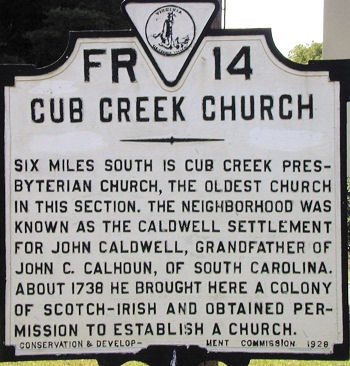 |
